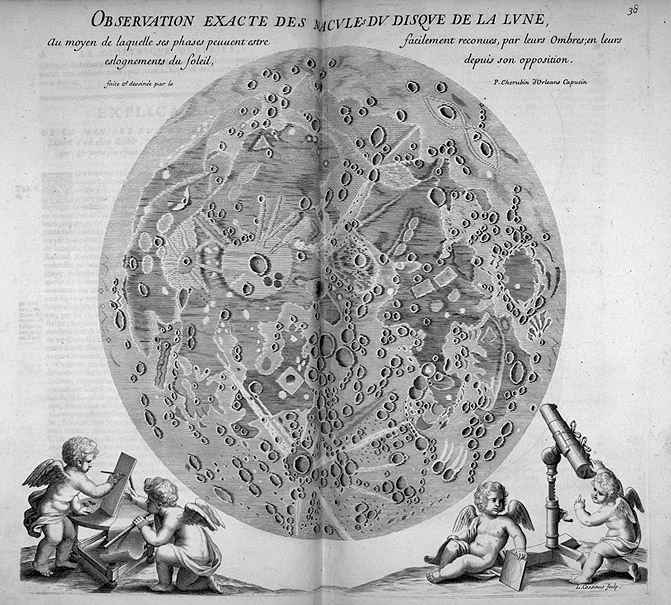January 27, 2018
Observation Exacte
Originally published August 7, 2008

image from Dioptrique Oculaire
The placement online of digitized versions of every book in the world will someday make all published information available. Already classic texts and accompanying maps are providing access to materials once viewable only in libraries. Today's LPOD is of a lunar map published in 1671 by the priest Chérubin d'Orleans. In his book Mapping and Naming the Moon Ewen Whitaker reports that Chérubin claims to have invented a pantograph to use at the telescope, which allowed him to make lunar maps with exquisite exactitude. But then Ewen points out that the maps are nearly identical to Hevelius' earlier ones, and indeed Hevelius accused the French Father of cartographic plagiarism. Apparently the only changes Chérubin made were to update the cherubs' telescope and to add his own name as author. Plagiarism was rampant in the early days of lunar mapping. Why did serious scientists baldly copy others work and call it their own? By 1671 the printing press was more than 200 years old and there was a brisk exchange of books and pamphlets between scholars all across Europe. Surely Chérubin knew his cheating would be discovered, so why would he do it?
Chuck Wood
Technical Details
I thank Jim Mosher for the information that this map - and the entire book - have been placed online by Universités de Strasbourg.
Related Links
Chérubin also copied Hevelius' full Moon map and presented it as his own.
Yesterday's LPOD: Aristarchian Colors
Tomorrow's LPOD: Happy 8/8/8
COMMENTS?
Register, Log in, and join in the comments.



